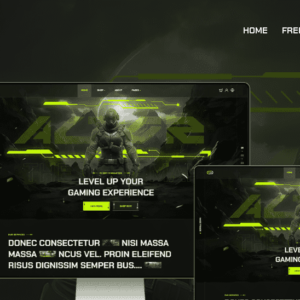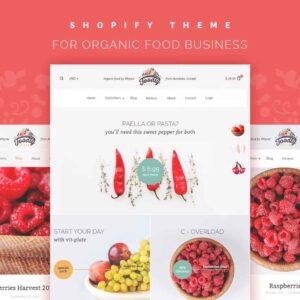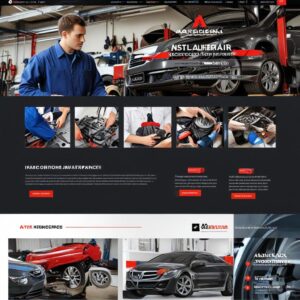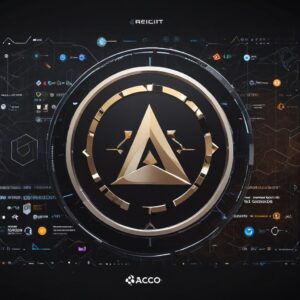
Top AI Image Generators for E-commerce in 2024
AI Image Generators for E-commerce
Introduction
Overview of AI Image Generators: AI image generators are advanced tools that use artificial intelligence to create images from text descriptions or other inputs. These tools are becoming increasingly important in e-commerce, allowing businesses to generate high-quality visuals quickly and efficiently.
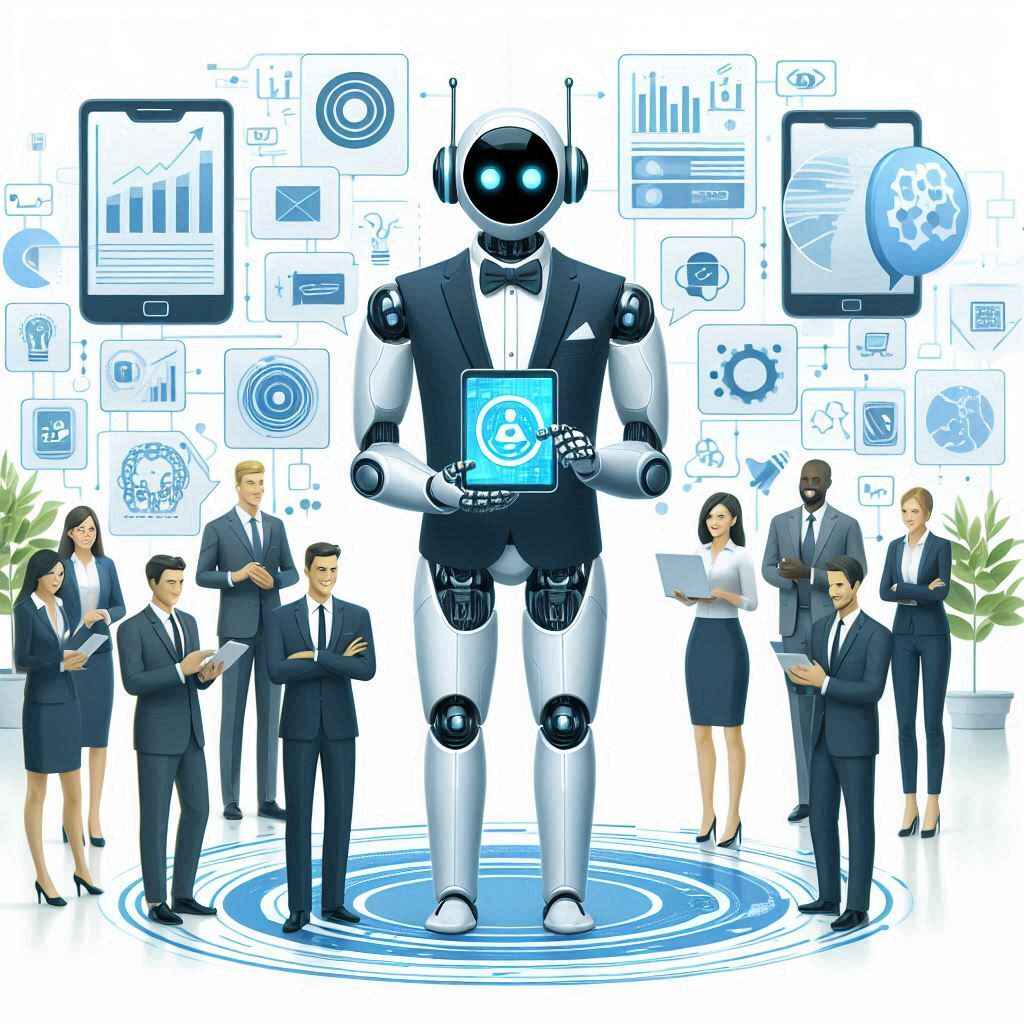
Importance of AI in E-commerce: AI is revolutionizing the e-commerce industry by enhancing customer experiences, optimizing operations, and providing valuable insights. AI image generators, in particular, help e-commerce businesses create engaging visuals that can attract and retain customers.
Table of Contents
What are AI Image Generators?
Definition and Explanation
AI image generators are advanced tools that leverage artificial intelligence to create images based on text descriptions or other inputs. These generators utilize deep learning algorithms, particularly neural networks, to analyze and synthesize visual data. By learning from vast datasets of images, they can produce high-quality, realistic images that can be used in various applications, including e-commerce, marketing, entertainment, and more.
How AI Image Generators Work
AI image generators typically use a type of neural network called Generative Adversarial Networks (GANs). GANs consist of two main components: the generator and the discriminator. The generator creates images, while the discriminator evaluates them against real images. Through this adversarial process, the generator improves over time, producing increasingly realistic images.
Another approach involves Variational Autoencoders (VAEs), which encode images into a latent space and then decode them back into images. This method allows for the generation of new images by sampling from the latent space.
History and Evolution
The development of AI image generators is rooted in the early advancements of machine learning and computer vision. Initially, these technologies were limited in their capabilities, producing simple and often unrealistic images. However, with the advent of deep learning and neural networks, significant progress has been made.
- Early Developments: The initial attempts at AI-generated images were rudimentary, often producing blurry or abstract results. Early models like DeepDream by Google showcased the potential of neural networks in image generation but were more artistic than realistic.
- Advancements in GANs: The introduction of GANs by Ian Goodfellow and his team in 2014 marked a significant milestone. GANs revolutionized the field by enabling the creation of highly realistic images. Over the years, various improvements, such as StyleGAN and BigGAN, have further enhanced the quality and realism of generated images.
- Modern AI Image Generators: Today, AI image generators like DALL-E, Stable Diffusion, and MidJourney can create incredibly detailed and lifelike images from textual descriptions. These tools are widely used in industries ranging from e-commerce to entertainment, demonstrating the practical applications of AI in visual content creation.
Applications in E-commerce
In the e-commerce industry, AI image generators offer numerous benefits :
- Product Visualization: Retailers can use AI-generated images to visualize products in different settings or variations without the need for extensive photoshoots.
- Personalized Marketing: AI can create personalized images for marketing campaigns, tailored to individual customer preferences.
- Virtual Try-Ons: Fashion and beauty brands can use AI to generate images of customers trying on clothes or makeup virtually, enhancing the online shopping experience.
The future of AI image generators looks promising, with ongoing research aimed at improving the quality, speed, and versatility of these tools. As AI continues to evolve, we can expect even more sophisticated and creative applications in various fields.
Benefits of Using AI Image Generators in E-commerce
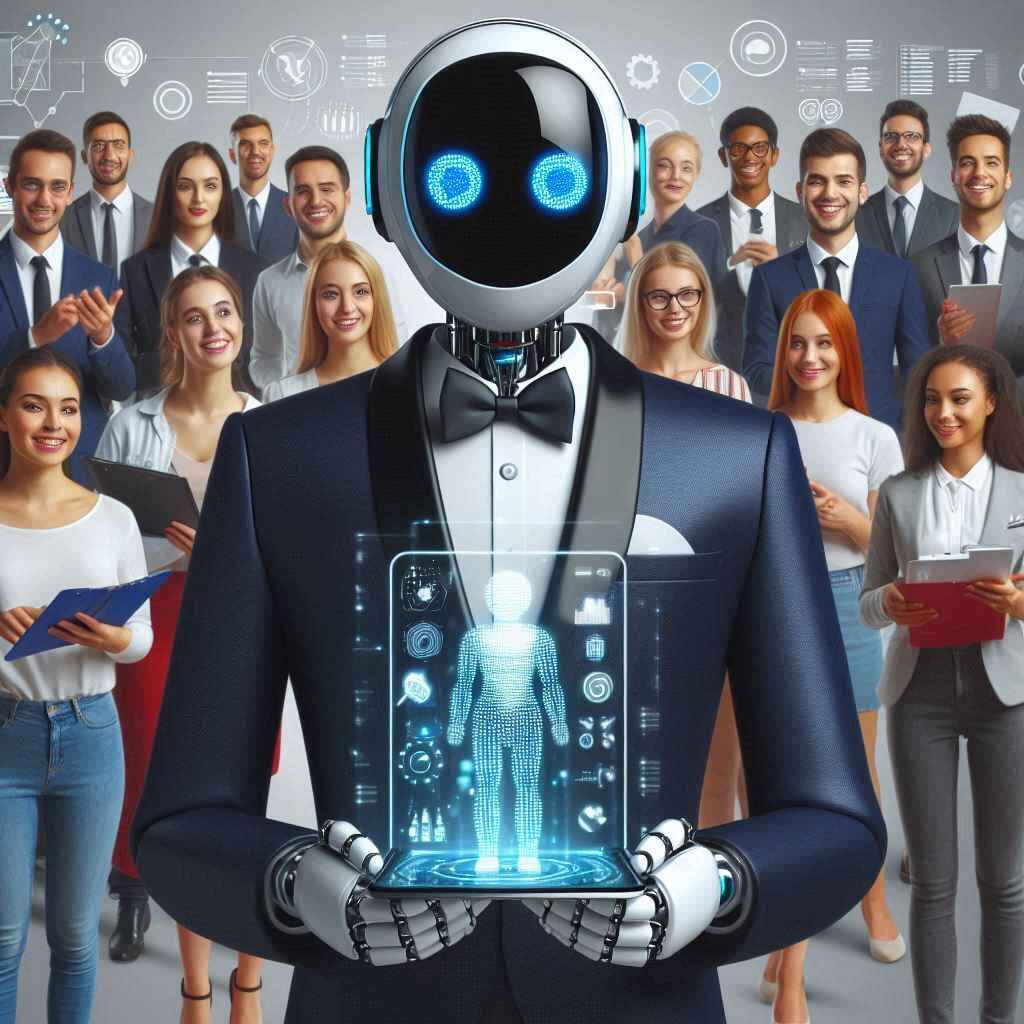
Enhanced Visual Content:
AI image generators significantly enhance product images by creating high-quality, detailed visuals that capture the attention of potential customers. These tools can generate images that are not only visually appealing but also tailored to highlight specific product features. This customization makes the images more engaging and effective for e-commerce platforms. For example, an AI image generator can create multiple variations of a product image, showcasing different angles, colors, and settings, which can help customers make more informed purchasing decisions.
Cost-Effectiveness:
One of the major benefits of AI image generators is their cost-effectiveness. Traditional methods of creating product images often involve expensive photoshoots, hiring professional photographers, and extensive editing processes. AI image generators, on the other hand, can produce high-quality images at a fraction of the cost. This reduction in expenditure allows e-commerce businesses to allocate their budget more efficiently, potentially investing in other areas such as marketing or product development.
Time Efficiency:
AI image generators save a considerable amount of time for e-commerce businesses. Instead of spending hours or even days on photoshoots and post-production editing, these tools can generate images in a matter of minutes. This efficiency allows businesses to quickly update their product listings and respond to market trends more rapidly. For instance, if a new product variant is released, an AI image generator can quickly create the necessary images, ensuring that the product is promptly available for customers to view and purchase.
Scalability: AI image generators offer scalability that traditional methods cannot match. As an e-commerce business grows and expands its product range, the demand for high-quality images increases. AI image generators can easily scale to meet this demand, producing a large volume of images without compromising on quality. This scalability is particularly beneficial during peak shopping seasons or product launches when the need for new images is high.
Consistency: Maintaining a consistent visual style across all product images is crucial for brand identity. AI image generators can ensure that all images adhere to the same style guidelines, providing a cohesive look and feel across the e-commerce platform. This consistency helps in building brand recognition and trust among customers.
Customization and Personalization: AI image generators can create personalized images tailored to individual customer preferences. For example, an AI tool can generate images of a product in different settings or with various accessories based on customer data. This level of personalization can enhance the shopping experience, making it more interactive and engaging for customers.
Innovation and Creativity: AI image generators open up new possibilities for innovation and creativity in e-commerce. Businesses can experiment with different visual styles, artistic effects, and unique presentations that would be difficult or costly to achieve through traditional methods. This creative flexibility can help e-commerce platforms stand out in a competitive market.
By leveraging the benefits of AI image generators, e-commerce businesses can enhance their visual content, reduce costs, save valuable time, and improve overall efficiency and competitiveness. These tools not only streamline the process of creating product images but also offer opportunities for innovation and personalization, ultimately contributing to a better customer experience.
Top AI Image Generators for E-commerce in 2024
Criteria for Selection: To identify the top AI image generators for 2024, several key factors were considered. These include the quality of generated images, ease of use, customization options, cost-effectiveness, and user reviews. These criteria ensure that the selected AI image generators are not only powerful but also practical for e-commerce applications.
List of Top AI Image Generators
- Microsoft Designer’s Image Creator
- High-Quality Outputs: Microsoft Designer’s Image Creator is renowned for producing high-quality images. Powered by DALL-E 3, it leverages advanced AI algorithms to generate detailed and realistic visuals.
- User-Friendly Interface: The tool is designed with ease of use in mind, making it accessible even for those without technical expertise. Its intuitive interface allows users to create images quickly and efficiently.
- Cost-Effectiveness: One of the standout features of this tool is that it is free to use. This makes it an excellent choice for e-commerce businesses looking to minimize costs while still obtaining high-quality images.
- DALL-E 3 by OpenAI
- Accuracy and Speed: DALL-E 3 is known for its ability to generate highly accurate and detailed images rapidly. This makes it ideal for e-commerce businesses that need to produce a large volume of images in a short amount of time.
- Customization Options: The tool offers extensive customization options, allowing users to tailor images to their specific needs. This includes adjusting the style, color, and composition of the images.
- Integration with Other Tools: DALL-E 3 can be integrated with other platforms and tools, enhancing its versatility and making it a valuable asset for e-commerce businesses.
- Midjourney
- Enhanced Image Resolution: Midjourney excels in enhancing the resolution of images, making them sharper and more detailed. This is particularly useful for e-commerce platforms that require high-resolution images to showcase their products effectively.
- Artistic Capabilities: The tool is also popular for its artistic capabilities, allowing users to create visually stunning images with unique styles and effects. This can help e-commerce businesses stand out in a crowded market.
- Ease of Use: Midjourney is designed to be user-friendly, with a straightforward interface that simplifies the image creation process.
- Jasper Art
- Diverse Styles of Images: Jasper Art is ideal for creating a wide range of image styles, from realistic to abstract. This flexibility makes it suitable for various e-commerce applications, from product listings to marketing materials.
- Customization and Personalization: The tool offers extensive customization options, allowing users to create images that match their brand’s aesthetic. It also provides watermark-free images, ensuring a professional look.
- User Reviews: Jasper Art has received positive reviews from users for its versatility and ease of use, making it a reliable choice for e-commerce businesses.
- Dream by Wombo
- Personalized Variations: Dream by Wombo is best known for its ability to create personalized variations of images. This feature is perfect for e-commerce businesses that want to offer customized visuals to their customers.
- Engaging Visuals: The tool excels in creating unique and engaging visuals that can capture the attention of potential customers. This can enhance the overall shopping experience and drive sales.
- Ease of Use: Dream by Wombo is designed to be easy to use, with a simple interface that allows users to create images quickly and efficiently.
By leveraging these top AI image generators, e-commerce businesses can enhance their visual content, making their products more appealing to potential customers. These tools not only improve the quality of product images but also offer cost-effective and time-efficient solutions, ultimately boosting the competitiveness and efficiency of e-commerce platforms.
Detailed Reviews of Each AI Image Generator
To help you choose the best AI image generator for your e-commerce needs, here are detailed reviews of some top tools, including their features, pros, and cons.
DALL-E 3
| Features | Description |
|---|---|
| Diverse Artwork Styles | Generates a wide range of styles, from photorealistic to futuristic graphics. |
| Integration with ChatGPT | Allows for intuitive interactions and text-in-image generation. |
| User-Friendly Interface | Easy to use, even for those without technical expertise. |
| Pros | Cons |
|---|---|
| 🌟 High-quality image generation | 📏 Limited aspect ratio selection |
| 📝 Excellent text integration | 🖼️ Can only generate one image at a time |
| 💼 Supports commercial use | ✂️ Lacks image-to-image editing capabilities |
Midjourney
| Features | Description |
|---|---|
| High-Resolution Outputs | Produces high-resolution, artistic images. |
| Advanced Features | Includes variations, upscaling, and outpainting. |
| Community Support | Strong community presence on Discord. |
| Pros | Cons |
|---|---|
| 🎨 Produces unique, high-quality images | 🔑 Requires a Discord account |
| 🖌️ Supports a wide variety of artistic styles | 💸 No free trial |
| 🌐 Strong community support | 📚 Steeper learning curve |
Microsoft Designer’s Image Creator
| Features | Description |
|---|---|
| Powered by DALL-E 3 | Utilizes advanced AI algorithms for image generation. |
| Integration with Microsoft Office | Seamlessly integrates with other Microsoft products. |
| Customization Options | Offers a variety of customization options. |
| Pros | Cons |
|---|---|
| 🎯 High accuracy in image rendering | 🔤 Limited typography assets and tools |
| ⚡ Fast generation speed | 🤝 No support for collaboration |
| 🔗 Seamless integration with Microsoft products |
Stable Diffusion
| Features | Description |
|---|---|
| Customization and Control | Allows for specific adjustments in image generation. |
| High-Quality Outputs | Produces detailed and realistic images. |
| User-Friendly Interface | Easy to navigate and use. |
| Pros | Cons |
|---|---|
| 🛠️ High level of customization | 💻 Requires powerful hardware |
| 📸 High-quality image outputs | 🕒 Can be time-consuming for complex images |
| 👥 User-friendly interface |
Adobe Firefly
| Features | Description |
|---|---|
| Robust Editing Tools | Offers advanced tools for integrating AI-generated images into photos. |
| High-Quality Outputs | Produces professional-grade images. |
| Creative Flexibility | Allows for a wide range of creative applications. |
| Pros | Cons |
|---|---|
| ✂️ Robust editing tools | 💰 Higher cost compared to other tools |
| 📷 High-quality outputs | 📈 Steeper learning curve |
| 🎨 Creative flexibility |
Wombo Dream
| Features | Description |
|---|---|
| Mobile-Friendly | Designed for quick and creative image generation on mobile devices. |
| Personalized Variations | Creates unique and engaging visuals. |
| Ease of Use | Simple interface for fast image creation. |
| Pros | Cons |
|---|---|
| 📱 Mobile-friendly | 📶 Requires internet connection |
| 🎨 Quick and creative image generation | 📏 Limited to mobile use |
| 🌟 Personalized variations |
By understanding the features, pros, and cons of these AI image generators, you can choose the best tool to enhance your e-commerce strategies. These tools offer a range of capabilities that can help you create high-quality, engaging visuals for your products, ultimately improving your online presence and customer experience.
How to Choose the Right AI Image Generator for Your E-commerce Business

Assessing Your Needs
When selecting an AI image generator, the first step is to thoroughly assess your specific needs. Here are some key considerations:
- Types of Images: Identify the types of images you require. Are you looking for product photos, lifestyle images, promotional graphics, or a combination of these? Each type may have different requirements in terms of style, resolution, and customization.
- Volume and Frequency: Determine the volume of images you need and how often you will need to update them. For instance, if you frequently add new products or run regular promotional campaigns, you will need a tool that can handle high volumes and quick turnaround times.
- Customization and Quality: Consider the level of customization and quality you expect. Do you need highly detailed and realistic images, or are more stylized and artistic images acceptable? Also, think about whether you need features like background removal, color adjustments, or specific branding elements.
By clearly defining your needs, you can narrow down your options and focus on tools that best meet your requirements.
Comparing Features
Once you have a clear understanding of your needs, the next step is to compare the features of different AI image generators. Here are some important features to consider:
- High-Resolution Outputs: Ensure the tool can produce high-resolution images that meet your quality standards. High-resolution images are crucial for showcasing product details and maintaining a professional appearance.
- Diverse Style Options: Look for tools that offer a variety of styles, from photorealistic to artistic. This flexibility allows you to create images that align with your brand’s aesthetic and appeal to your target audience.
- Integration with Existing Platforms: Check if the AI image generator can easily integrate with your existing e-commerce platform, content management system, or design software. Seamless integration can streamline your workflow and save time.
- User Interface and Ease of Use: Evaluate the user interface and overall ease of use. A tool with an intuitive interface and straightforward controls will be easier to adopt and use effectively, even for team members without technical expertise.
- Customer Support: Consider the availability and quality of customer support. Reliable support can be invaluable if you encounter issues or need assistance with the tool.
- Additional Features: Look for additional features that can enhance your image creation process, such as batch processing, background removal, image enhancement capabilities, and templates.
By comparing these features, you can identify the tools that offer the functionality you need to create high-quality images efficiently.
Budget Considerations
Budget is a crucial factor when choosing an AI image generator. Here are some points to consider:
- Pricing Models: AI image generators can have different pricing models, including subscription-based, pay-per-use, or one-time purchase. Evaluate which model best fits your financial constraints and usage patterns.
- Cost vs. Features: Weigh the cost of the tool against the features and benefits it provides. A more expensive tool may offer advanced features and higher quality, but it’s important to ensure that these align with your needs and provide good value for money.
- Free Trials and Demos: Take advantage of free trials or demos offered by many AI image generators. This allows you to test the tool’s capabilities and determine if it meets your requirements before committing to a purchase.
- Long-Term Investment: Consider the long-term investment. While a cheaper tool might save money upfront, a more expensive tool with better features and support might be more cost-effective in the long run by improving efficiency and reducing the need for additional tools or services.
By carefully assessing your budget and comparing it with the features and benefits of different AI image generators, you can make an informed decision that balances cost and functionality.
Choosing the right AI image generator for your e-commerce business involves a thorough assessment of your needs, a detailed comparison of features, and careful budget considerations. By following these steps, you can select a tool that enhances your visual content, improves efficiency, and ultimately boosts your e-commerce success.
Integration of AI Image Generators with E-commerce Platforms
Compatibility
When integrating AI Image Generators with e-commerce platforms like Shopify, WooCommerce, and Magento, compatibility is crucial. This means ensuring that the AI tools can work seamlessly with these platforms. Look for AI Image Generators that offer plugins or APIs specifically designed for these e-commerce systems. Plugins and APIs act as bridges, allowing the AI tools to communicate and function within the e-commerce platform without causing any technical issues. Compatibility ensures that the integration enhances your workflow rather than disrupting it.
Ease of Integration
Ease of integration refers to how simple it is to set up and start using the AI Image Generators with your e-commerce platform. Ideally, you want tools that offer:
- Straightforward setup processes: This means the initial installation and configuration should be user-friendly.
- Detailed documentation: Comprehensive guides and manuals that explain each step of the integration process.
- Robust customer support: Access to support teams that can help resolve any issues quickly.
- Drag-and-drop functionality or one-click integrations: These features make it easy to add AI-generated images to your product listings without needing extensive technical knowledge. This ease of integration allows you to quickly start benefiting from AI-generated images, saving time and effort.
Case Studies
Case studies provide real-world examples of how other businesses have successfully integrated AI Image Generators with their e-commerce platforms. These examples can offer valuable insights and inspiration for your own integration. For instance:
- Fashion Retailer: A fashion retailer used AI Image Generators to create high-quality product images. As a result, they saw a 20% increase in online sales. This demonstrates how AI-generated images can enhance the visual appeal of products, attracting more customers and boosting sales.
- Home Decor Store: Another example is a home decor store that integrated AI Image Generators with their e-commerce platform. They experienced a 30% reduction in image production costs. This shows how AI tools can make the image creation process more efficient and cost-effective.
By focusing on these three aspects—compatibility, ease of integration, and real-world examples—you can better understand how AI Image Generators can enhance your e-commerce platform. This integration can lead to improved workflow, increased sales, and reduced costs, making it a valuable addition to your e-commerce strategy.
Enhancing Product Listings with AI Image Generators
Improving Visual Appeal
AI Image Generators can transform the visual appeal of your product listings by creating high-quality, visually striking images.
- Attention-Grabbing: High-quality images are more likely to catch the eye of potential customers as they browse through products. This initial attraction can lead to higher engagement rates.
- Highlighting Features: AI-generated images can emphasize specific features and details of a product that might not be as noticeable in standard photos. For example, intricate designs on clothing or the texture of a material can be showcased more effectively.
- Professional Look: Enhanced images give your product listings a polished and professional appearance, which can instill confidence in potential buyers about the quality of your products.
This improvement in visual appeal can lead to increased customer interest and ultimately boost sales.
Consistency and Branding
Maintaining a consistent brand image across all product listings is essential for building a strong brand identity. AI Image Generators can help achieve this by:
- Uniform Style: These tools can ensure that all product images follow a uniform style, such as consistent lighting, background, and framing. This uniformity helps in creating a cohesive look across your e-commerce site.
- Adherence to Brand Guidelines: AI Image Generators can be programmed to adhere to your brand’s specific guidelines, ensuring that every image aligns with your brand’s aesthetic and messaging.
- Building Trust: Consistent and branded images build trust with customers. When your e-commerce store looks professional and cohesive, it reassures customers about the reliability and quality of your brand.
By maintaining consistency and reinforcing your brand identity, you can create a more memorable and trustworthy shopping experience for your customers.

SEO Benefits
High-quality images can also contribute to your SEO efforts in several ways:
- Improved Load Speed: Optimized images load faster, which can enhance the overall performance of your website. Faster load times are a crucial factor in search engine rankings.
- Enhanced User Experience: High-quality images improve the user experience by making your site more visually appealing and easier to navigate. A better user experience can lead to longer site visits and lower bounce rates, both of which positively impact SEO.
- Alt Text and Metadata: AI Image Generators can help you create images with appropriate alt text and metadata. Alt text is used by search engines to understand the content of an image, and having relevant alt text can improve your product listings’ visibility in search engine results.
- Increased Organic Traffic: By leveraging these SEO benefits, your product listings can rank higher in search engine results, attracting more organic traffic to your e-commerce site.
By focusing on improving visual appeal, maintaining consistency and branding, and leveraging SEO benefits, AI Image Generators can significantly enhance your product listings, leading to better engagement, increased sales, and improved search engine rankings.
Cost Analysis: AI Image Generators vs. Traditional Methods
Initial Costs
When comparing the initial costs of AI Image Generators with traditional methods, several factors come into play:
- Traditional Methods: These often involve significant upfront expenses. You need to hire professional photographers, rent studio space, and purchase or rent high-quality equipment such as cameras, lighting, and backdrops. Additionally, there may be costs associated with hiring models, makeup artists, and stylists, depending on the nature of the products being photographed.
- AI Image Generators: In contrast, AI Image Generators typically require a subscription fee or a one-time purchase. These costs are generally lower than the combined expenses of traditional methods. The subscription model often includes regular updates and access to new features, ensuring that the tool remains up-to-date without additional costs.
Long-term Savings
AI Image Generators can offer substantial long-term savings compared to traditional methods:
- Traditional Methods: Ongoing costs include paying for photographers and editors for each new product shoot, maintaining and upgrading equipment, and potentially renting studio space repeatedly. These recurring expenses can add up over time, making traditional methods costly in the long run.
- AI Image Generators: These tools automate the image creation process, significantly reducing the need for continuous human intervention. Once you have the AI tool, you can generate images as needed without incurring additional costs for each new product. This automation leads to consistent quality and reduces the time and labor required for image production, resulting in long-term savings.
ROI: Return on Investment Analysis
Analyzing the return on investment (ROI) is crucial to understanding the financial benefits of AI Image Generators:
- Efficiency: AI Image Generators can quickly produce high-quality images, allowing you to list products faster. This speed can lead to quicker sales cycles and improved cash flow.
- Cost Reduction: By minimizing the need for ongoing expenses associated with traditional methods, AI Image Generators can significantly reduce overall costs. This reduction in expenses directly contributes to a higher ROI.
- Sales Impact: High-quality images can enhance the visual appeal of your product listings, attracting more customers and potentially increasing sales. The combination of reduced costs and increased sales can lead to a substantial improvement in profitability.
- Scalability: AI Image Generators can easily scale with your business. As your product catalog grows, the AI tool can handle the increased demand without a proportional increase in costs, unlike traditional methods where more products mean more photoshoots and higher expenses.
By comparing initial costs, discussing long-term savings, and analyzing ROI, it becomes clear that AI Image Generators can be a more cost-effective choice compared to traditional methods. They offer a modern, efficient, and scalable solution for creating high-quality product images, ultimately enhancing your e-commerce business’s profitability.
Future Trends in AI Image Generation for E-commerce
Technological Advancements
AI Image Generators are continuously evolving, with several key technological advancements enhancing their capabilities:
- Generative Adversarial Networks (GANs): GANs are a class of AI algorithms used to generate new data samples that resemble a given dataset. In the context of image generation, GANs can create highly realistic images from scratch. This technology allows e-commerce platforms to generate product images that are virtually indistinguishable from real photographs, providing a more authentic shopping experience for customers.
- Neural Style Transfer: This technique involves applying the style of one image to the content of another. For example, it can blend the artistic style of a painting with a photograph of a product. Recent advancements in neural style transfer are making it possible to create more seamless and visually appealing images, which can be used to enhance product listings with unique and attractive visuals.
- 3D Image Generation: AI is also making strides in generating 3D images of products. This allows customers to view products from multiple angles and even interact with them in a virtual space, providing a more immersive shopping experience.
These advancements enable e-commerce platforms to offer more personalized and visually appealing product images, enhancing the overall shopping experience and potentially increasing sales.
Market Predictions
The market for AI Image Generators is poised for significant growth in the coming years:
- Increasing Demand: As businesses across various sectors recognize the value of high-quality, customizable images, the demand for AI Image Generators is expected to rise. This is particularly true for e-commerce, where visual content is crucial for customer engagement and conversion rates.
- Compound Annual Growth Rate (CAGR): Analysts predict that the market for AI Image Generators will see a compound annual growth rate (CAGR) of over 20% by 2030. This growth will be driven by the increasing adoption of AI technologies and the continuous improvement of AI capabilities.
- Broader Adoption: Beyond e-commerce, industries such as real estate, automotive, and fashion are also expected to adopt AI Image Generators to enhance their visual content, further driving market growth.
This projected growth highlights the expanding role of AI in creating high-quality visual content and its increasing importance in various industries.
Impact on E-commerce
The future trends in AI Image Generators will have a profound impact on e-commerce:
- Engaging Product Displays: By leveraging advanced AI tools, online retailers can create more engaging and dynamic product displays. High-quality, realistic images can attract more customers and keep them engaged longer, increasing the likelihood of conversions.
- Improved Conversion Rates: Enhanced product images can lead to higher conversion rates. When customers can see detailed, high-quality images of products, they are more likely to make a purchase.
- Customer Satisfaction: AI Image Generators can help create a more satisfying shopping experience by providing customers with clear and appealing visuals. This can lead to higher customer satisfaction and loyalty.
- Adaptability: AI Image Generators enable businesses to quickly adapt to changing market trends and consumer preferences. For example, if a new style or trend emerges, AI tools can quickly generate images that align with the new trend, keeping the product listings relevant and appealing.
By staying ahead of these trends, e-commerce businesses can ensure they remain competitive in the fast-paced digital marketplace.
Common Challenges and Solutions in Using AI Image Generators
Technical Issues
Technical issues are a common challenge when using AI Image Generators. These can include:
- Software Bugs: Bugs in the software can cause the AI Image Generator to malfunction or produce subpar images. Regular software updates and patches are essential to fix these bugs and improve the tool’s performance.
- Hardware Limitations: AI Image Generators can be resource-intensive, requiring powerful hardware to run efficiently. Ensuring that your hardware meets the necessary specifications is crucial. Upgrading your hardware or using cloud-based solutions can help overcome these limitations.
- System Compatibility: Ensuring that the AI Image Generator is compatible with your existing systems and e-commerce platform is vital. Using plugins or APIs designed for your specific platform can facilitate smoother integration.
Solutions:
- Regular Updates and Maintenance: Keep your software and hardware updated to prevent and resolve technical issues. Regular maintenance checks can help identify and fix potential problems before they escalate.
- Dedicated IT Team: Having a dedicated IT team to troubleshoot and resolve issues promptly can minimize downtime. This team can also ensure that the AI Image Generator is properly integrated and functioning optimally within your e-commerce platform.
Quality Control
Maintaining high-quality outputs from AI Image Generators is essential for customer satisfaction. Challenges in this area include:
- Inconsistent Image Quality: AI-generated images may sometimes vary in quality, which can affect the overall appearance of your product listings.
- Errors in Generated Images: AI tools might produce images with errors or inaccuracies, such as incorrect colors or distorted features.
Solutions:
- Robust Quality Control Process: Implement a quality control process that includes regular reviews and testing of generated images. This process should involve checking images for accuracy, visual appeal, and adherence to brand guidelines.
- Advanced Algorithms: Use advanced algorithms that can detect and correct errors in real-time. These algorithms can help ensure that the generated images meet the desired quality standards.
- Human Oversight: While AI can automate much of the image generation process, human oversight is still important. Having a team to review and approve images before they go live can help maintain high quality.
User Training
Training staff to use AI Image Generators effectively is another significant challenge. This includes:
- Technical Training: Staff need to understand the technical aspects of using AI Image Generators, including how to operate the software and troubleshoot common issues.
- Practical Applications: Employees should also be trained on the practical applications of AI Image Generators, such as how to integrate generated images into product listings and optimize them for SEO.
Solutions:
- Comprehensive Training Programs: Provide comprehensive training programs that cover both the technical and practical aspects of using AI Image Generators. These programs should include hands-on training, tutorials, and documentation.
- Ongoing Support and Resources: Offer ongoing support and resources to help staff stay updated with the latest features and best practices. This can include access to a knowledge base, regular training sessions, and a support team to answer questions and resolve issues.
By addressing these common challenges with effective solutions, you can maximize the benefits of AI Image Generators and enhance your e-commerce operations.
Case Studies: Success Stories from E-commerce Businesses
Small Businesses
Small businesses have significantly benefited from AI Image Generators. For instance, a local boutique in New York used AI Image Generators to create high-quality product images, which led to a 30% increase in online sales. By automating the image creation process, they saved time and resources, allowing them to focus on other aspects of their business.
Large Enterprises
Large enterprises are also leveraging AI Image Generators to enhance their operations. A notable example is a global fashion retailer that integrated AI Image Generators into their e-commerce platform. This integration resulted in a 20% reduction in content creation costs and a 15% increase in customer engagement. The AI-generated images provided a more personalized shopping experience, which boosted customer satisfaction.
Industry-Specific Examples
Various industries have seen success with AI Image Generators. In the automotive industry, a leading car manufacturer used AI Image Generators to create realistic images of new car models. This approach not only reduced the time to market but also improved customer interest and pre-orders. Similarly, in the home decor industry, an online furniture store utilized AI Image Generators to showcase different room setups, leading to a 25% increase in conversion rates.
Ethical Considerations in Using AI Image Generators
Copyright Issues
When using AI Image Generators, it’s crucial to address copyright concerns. Businesses must ensure that the images generated do not infringe on existing copyrights. This involves using AI tools that are trained on legally obtained datasets and being transparent about the sources of the images.
Bias and Fairness
Ensuring fairness in AI-generated images is another important ethical consideration. AI Image Generators should be designed to avoid biases that could lead to unfair representation. This includes using diverse datasets and regularly auditing the AI models to detect and correct any biases.
Transparency
Transparency with customers about the use of AI Image Generators is essential. Businesses should clearly communicate when images are AI-generated and provide information on how the AI tools are used. This builds trust with customers and ensures they are informed about the technology behind the images they see.
Case Studies: Success Stories from E-commerce Businesses
Small Businesses
Small businesses have significantly benefited from AI Image Generators. For instance, a local boutique in New York used AI Image Generators to create high-quality product images, which led to a 30% increase in online sales. By automating the image creation process, they saved time and resources, allowing them to focus on other aspects of their business.
Explanation:
- High-Quality Product Images: AI Image Generators can produce professional-grade images that enhance the visual appeal of products.
- 30% Increase in Online Sales: The improved images attract more customers, leading to higher sales.
- Time and Resource Savings: Automating image creation frees up time for other business activities, such as marketing and customer service.
Large Enterprises
Large enterprises are also leveraging AI Image Generators to enhance their operations. A notable example is a global fashion retailer that integrated AI Image Generators into their e-commerce platform. This integration resulted in a 20% reduction in content creation costs and a 15% increase in customer engagement. The AI-generated images provided a more personalized shopping experience, which boosted customer satisfaction.
Explanation:
- Integration into E-commerce Platform: AI Image Generators are embedded into the retailer’s online system to streamline image production.
- 20% Reduction in Content Creation Costs: Automating image generation reduces the need for manual labor and expensive photo shoots.
- 15% Increase in Customer Engagement: Personalized and visually appealing images attract more customer interaction and interest.
- Boosted Customer Satisfaction: Enhanced shopping experiences lead to happier customers and potentially more sales.
Industry-Specific Examples
Various industries have seen success with AI Image Generators. In the automotive industry, a leading car manufacturer used AI Image Generators to create realistic images of new car models. This approach not only reduced the time to market but also improved customer interest and pre-orders. Similarly, in the home decor industry, an online furniture store utilized AI Image Generators to showcase different room setups, leading to a 25% increase in conversion rates.
Explanation:
- Automotive Industry: Realistic images of new car models help customers visualize the product better, increasing interest and pre-orders.
- Reduced Time to Market: Faster image creation means new products can be launched more quickly.
- Home Decor Industry: AI-generated images of different room setups help customers see how furniture fits into various spaces, boosting conversion rates.
- 25% Increase in Conversion Rates: More customers make purchases after seeing the appealing and realistic images.
Ethical Considerations in Using AI Image Generators
Copyright Issues
When using AI Image Generators, it’s crucial to address copyright concerns. Businesses must ensure that the images generated do not infringe on existing copyrights. This involves using AI tools that are trained on legally obtained datasets and being transparent about the sources of the images.
Explanation:
- Copyright Concerns: Ensuring that AI-generated images do not violate copyright laws is essential to avoid legal issues.
- Legally Obtained Datasets: Using datasets that are legally sourced ensures that the images are original and not copied from copyrighted material.
- Transparency: Being open about the sources of the images builds trust with customers and avoids potential copyright disputes.
Bias and Fairness
Ensuring fairness in AI-generated images is another important ethical consideration. AI Image Generators should be designed to avoid biases that could lead to unfair representation. This includes using diverse datasets and regularly auditing the AI models to detect and correct any biases.
Explanation:
- Avoiding Bias: AI models should be trained on diverse datasets to prevent biased or unfair representations in the generated images.
- Regular Audits: Continuously checking and updating the AI models helps identify and correct any biases that may arise.
- Fair Representation: Ensuring that the images are fair and unbiased promotes equality and inclusivity.
Transparency
Transparency with customers about the use of AI Image Generators is essential. Businesses should clearly communicate when images are AI-generated and provide information on how the AI tools are used. This builds trust with customers and ensures they are informed about the technology behind the images they see.
Explanation:
- Clear Communication: Informing customers that images are AI-generated helps manage their expectations and builds trust.
- Information on AI Tools: Providing details about how the AI tools work and their benefits helps customers understand and appreciate the technology.
- Building Trust: Transparency fosters a positive relationship with customers, making them more likely to trust and engage with the business.
By focusing on these ethical considerations, businesses can responsibly leverage AI Image Generators to enhance their e-commerce operations while maintaining trust and fairness.
Prompts for AI Image Generators
What are Prompts?
Prompts are specific instructions or inputs given to AI Image Generators to create desired images. They play a crucial role in guiding the AI to produce accurate and relevant visuals. By providing clear and detailed prompts, users can ensure that the generated images meet their expectations and requirements.
Examples of Effective Prompts
Effective prompts are essential for getting the best results from AI Image Generators. For instance, a prompt like “Generate a high-resolution image of a modern living room with a minimalist design, featuring a grey sofa and a coffee table” provides clear and specific details that help the AI create a precise image. Another example could be “Create an image of a stylish woman wearing a red dress, standing in a cityscape background during sunset.”
Selling Prompts
We offer a variety of prompts for AI Image Generators on our website at reasonable prices. These prompts are designed to help you get the most out of your AI tools, ensuring high-quality and relevant images for your e-commerce needs. Visit our website to explore and purchase these effective prompts.
Conclusion
In this post, we discussed the importance of prompts for AI Image Generators, provided examples of effective prompts, and mentioned that you can purchase prompts from our website. Prompts are essential for guiding AI Image Generators to produce accurate and relevant images, which can significantly enhance your e-commerce business.
AI Image Generators are transforming the way e-commerce businesses create and use images. By using well-crafted prompts, you can ensure that the images generated are of high quality and meet your specific needs. This technology not only saves time and resources but also enhances the overall customer experience.
Explore the potential of AI Image Generators for your e-commerce business and visit our website to purchase effective prompts. Start leveraging this innovative technology today to stay ahead in the competitive market.
FAQs ( frequently asked questions )
What are AI Image Generators?
AI Image Generators are advanced tools that leverage artificial intelligence to create images from text descriptions. These tools are particularly useful in e-commerce, where they can generate high-quality product images quickly and efficiently. This technology helps businesses save time and resources by automating the creation of visuals that would otherwise require manual effort and professional photography.
How do AI Image Generators work?
AI Image Generators use deep learning algorithms, specifically neural networks, trained on extensive datasets of images. When you input a text prompt, the AI processes the description and generates an image that matches the given details. This process involves several steps:
Text Analysis: The AI interprets the text prompt to understand the desired image.
Image Generation: Using generative adversarial networks (GANs) or other deep learning techniques, the AI creates an image that aligns with the text description.
Refinement: The generated image is refined to enhance quality and ensure it meets the specified criteria.
Can AI Image Generators be used for commercial purposes?
Yes, many AI Image Generators offer commercial licenses, allowing businesses to use the generated images for marketing, advertising, and other commercial activities. However, it’s crucial to review the terms and conditions of each tool to ensure compliance with copyright laws and licensing agreements.
Technical Support
If you encounter issues while using AI Image Generators, there are several ways to get help:
FAQs and User Guides: Most platforms provide comprehensive FAQs and user guides on their websites, offering solutions to common problems and detailed instructions on using the tools.
Community Forums: Many AI Image Generator platforms have community forums where users can share experiences, ask questions, and get advice from other users.
Direct Support: For more personalized assistance, you can contact the technical support teams of these platforms via email or live chat. They can help troubleshoot specific issues and provide guidance on using the tools effectively.
I need Services with …
- Wordpress Service
- Shopify Service
- Youtube Service
- Cv and resume Service
- Linkedin Service
Latest Post
-
Top Daily Taste WordPress Theme: Best Choice for Your Site
$ 15Original price was: $ 15.$ 13Current price is: $ 13. Add to cartAdd to WishlistAdd to Wishlist -
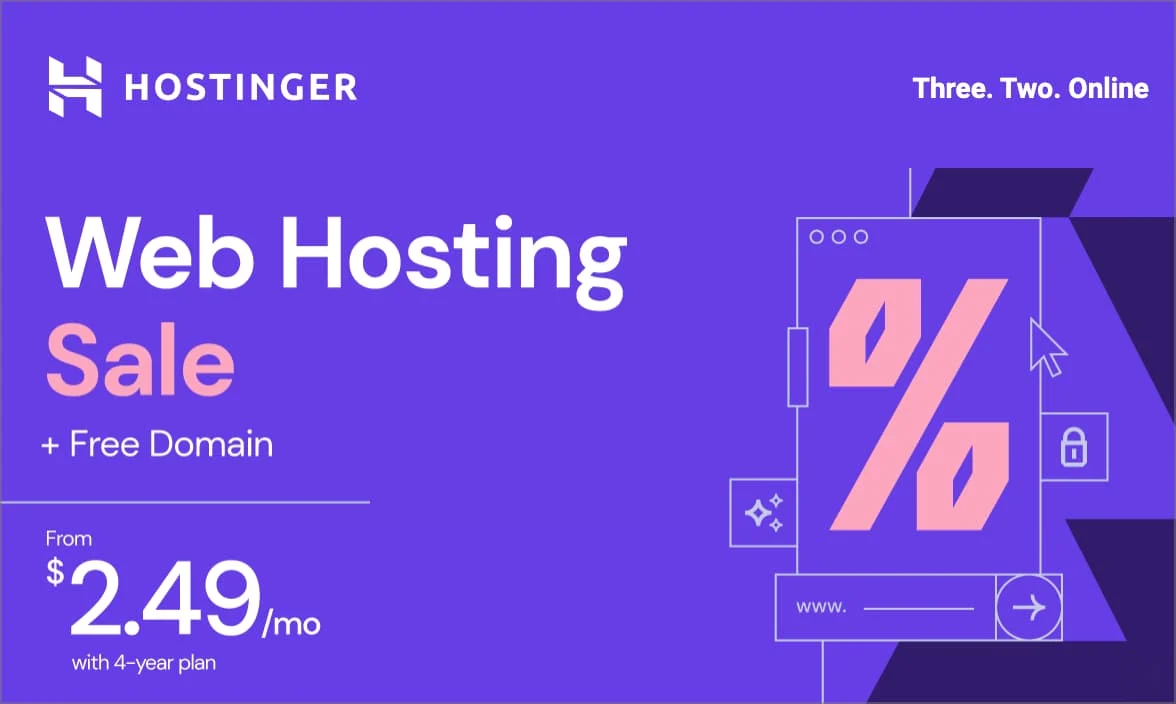
Get Hostinger’s Low-Cost Hosting Now!
Don’t miss out on affordable hosting with Hostinger – click now to bring your website online at an unbeatable price!



